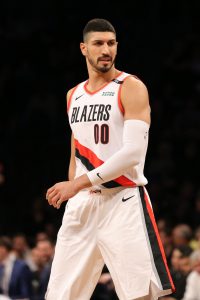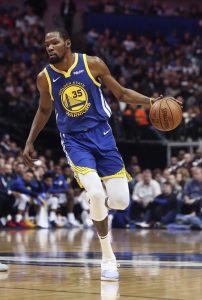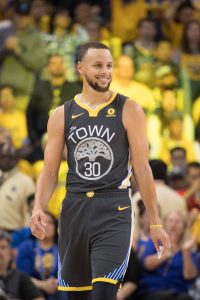The bi-annual exception is one of the tools available to NBA teams who are over the cap, giving those clubs the flexibility to offer free agents more than the minimum salary. In 2019/20, the bi-annual exception is worth $3,623,000, and can be used to offer a deal worth up to about $7,427,150 over two years.
However, the bi-annual exception isn’t available to every team. Clubs that go below the cap in order to use cap room lose access to the exception. Additionally, using the BAE imposes a hard cap of $138,928,000 (the tax apron) on a club. So if a team has surpassed the tax apron – or wants to retain the flexibility to do so – that team can’t use the bi-annual exception.
Finally, as its name suggests, the bi-annual exception can’t be used by a team in consecutive years. In 2018/19, four teams used the BAE — the Bucks (Brook Lopez), Pelicans (Elfrid Payton), Knicks (Allonzo Trier), and Spurs (Dante Cunningham). As such, the exception isn’t available to those clubs during the 2019/20 league year. They’ll be able to use it again next summer.
With all those factors in mind, here’s a breakdown of how teams are using – or not using – their respective bi-annual exceptions in 2019/20:
BAE Still Available:
- Charlotte Hornets
- Minnesota Timberwolves
- Orlando Magic
- Washington Wizards
The five clubs listed above are the ones who could most realistically still use their bi-annual exception at some point during the 2019/20 season.
All four of these teams have already hard-capped themselves by using more than the taxpayer portion of the mid-level exception or by acquiring a player via sign-and-trade, so they could theoretically use their BAEs without worrying about further restrictions.
BAE Unavailable:
Used:
- Dallas Mavericks
- Used: $3,500,000 (Boban Marjanovic)
- Available: $123,000
- Detroit Pistons
- Used: $3,200,000 (Markieff Morris)
- Available: $423,000
- Memphis Grizzlies
- Used: $2,625,000 (Marko Guduric)
- Available: $998,000
- Toronto Raptors
- Used: $3,623,000 (Stanley Johnson)
- Available: $0
So far, the Mavericks, Pistons, Grizzlies, and Raptors are the only teams that won’t have the bi-annual exception available to them during the 2020/21 league year after using it this season.
Went under cap:
- Atlanta Hawks
- Boston Celtics
- Brooklyn Nets
- Chicago Bulls
- Indiana Pacers
- Los Angeles Clippers
- Los Angeles Lakers
- Philadelphia 76ers
- Phoenix Suns
- Sacramento Kings
- Utah Jazz
These 11 teams forfeited their right to the bi-annual exception when they went under the cap and used space this offseason.
Over or near tax apron:
- Cleveland Cavaliers
- Denver Nuggets
- Golden State Warriors
- Houston Rockets
- Miami Heat
- Oklahoma City Thunder
- Portland Trail Blazers
Not all of these seven teams are over the tax apron, and some are still theoretically in position to use the bi-annual exception. However, teams like the Cavaliers and Nuggets still have their full mid-level exceptions available, so they’d be more likely to dip into those rather than using their BAEs. The Warriors and Heat are right up against hard caps, the Thunder are looking to sneak below the tax line, and the Blazers are above the tax apron.
Used last year:
- Milwaukee Bucks
- New Orleans Pelicans
- New York Knicks
- San Antonio Spurs
As noted in the intro, these are the four teams that used their bi-annual exceptions in 2018/19 and won’t have them again until 2020/21 as a result.
Salary information from Bobby Marks of ESPN, Jeff Siegel of Early Bird Rights, and Eric Pincus of Basketball Insiders was used in the creation of this post.
 ; $375,000 (
; $375,000 (

